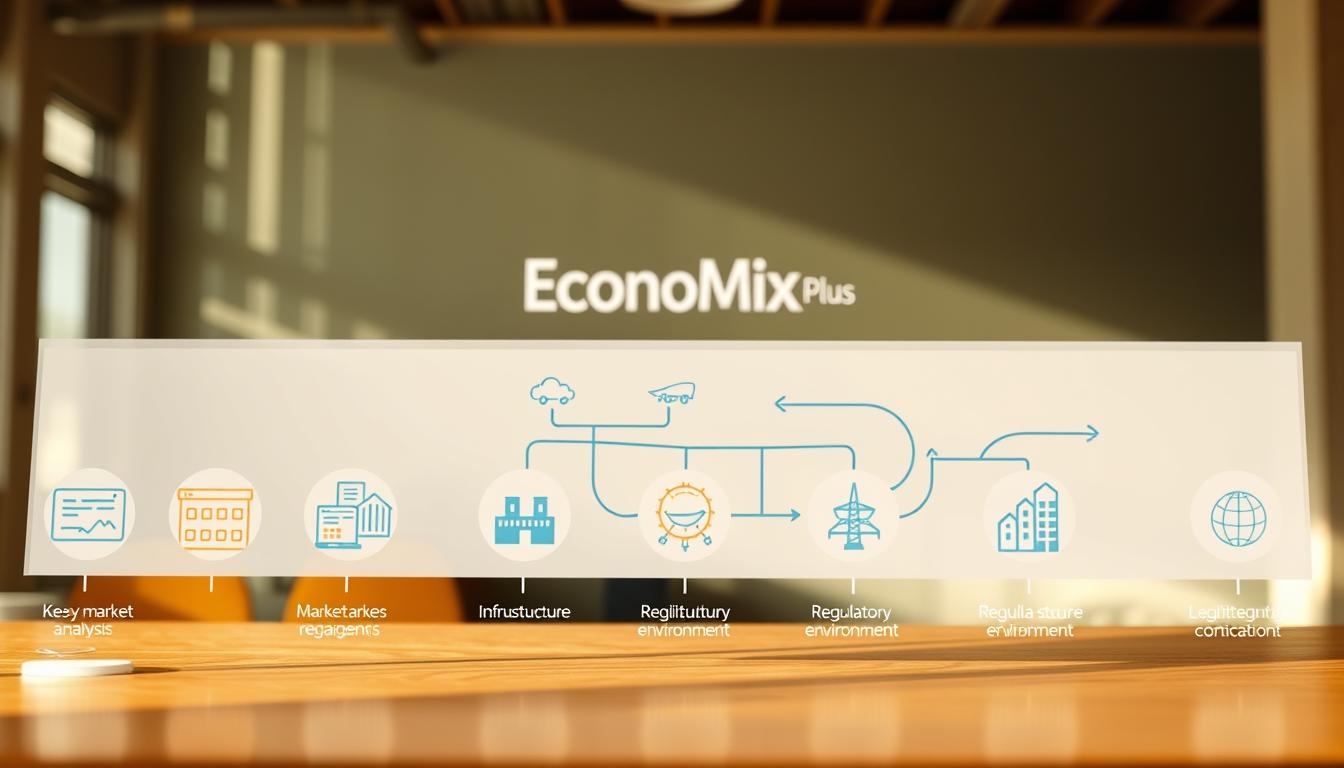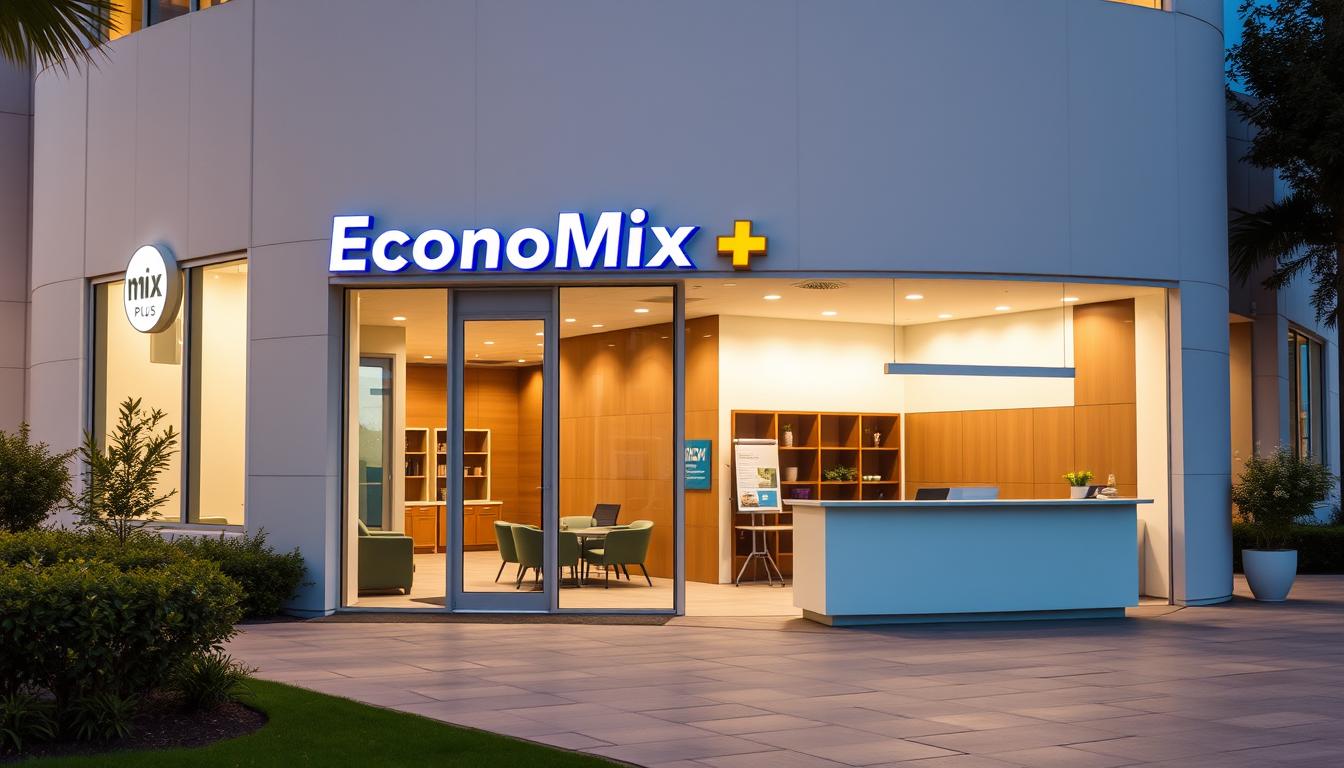What if the difference between thriving and closing shop comes down to a single decision made before you even launch? Where you plant your business roots isn’t just about convenience—it’s a strategic lever that shapes customer reach, talent acquisition, and long-term growth. With over 5.4 million new businesses formed in 2023 (U.S. Census Bureau), standing out starts with smarter geographic choices.
Bank of America’s 2024 Startup Insights Report reveals that 83% of failed ventures misjudged their site’s impact on operational costs or market access. Meanwhile, Maptive’s geospatial analytics platform shows businesses within 5 miles of their target audience see 40% higher retention rates. This guide cuts through the noise with data-backed frameworks to align your physical presence with your ambitions.
You’ll discover how to evaluate local regulations, infrastructure quality, and competitor density while balancing affordability. We break down real-world case studies from thriving startups and provide tools to analyze demographic shifts. Whether you’re eyeing urban hubs or suburban niches, actionable insights await.
Key Takeaways
- Location directly impacts cash flow through taxes, rent, and labor costs
- Proximity to customers can boost retention by 40% (Maptive)
- 83% of failed startups overlooked site selection factors (Bank of America)
- Data-driven strategies reduce relocation risks by 62%
- Step-by-step framework to compare multiple viable locations
Understanding the Importance of Location for Your Startup
Your venture’s geographic base acts as a silent partner in every transaction. Businesses within 1 mile of their core demographic see 22% faster revenue growth compared to those 10+ miles away, per 2024 CBRE market analysis. This proximity advantage extends beyond customer reach—it shapes hiring pools, vendor networks, and scalability potential, making it essential for choosing the right location for your business.
Growth Catalysts Hidden in Map Coordinates
Prime spots aren’t just about foot traffic. A 2023 MIT study found startups in tax-incentive zones secured 35% more Series A funding due to reduced burn rates, allowing them to allocate resources more effectively. These zones provide financial relief, which can be a game changer for early-stage companies.
Yet 68% of founders overpay for visibility, according to JLL’s Retail Forecast, often overlooking the potential of strategically located areas that offer both affordability and accessibility. The sweet spot? Areas with balanced commuter access and local market demand exceeding supply by 15-20%. This balance not only attracts customers but also fosters a vibrant community, enhancing brand loyalty and engagement, which are vital for sustainable growth.
Cost Versus Opportunity Equations
Every dollar saved on rent could fund three months of digital ads—but empty storefronts don’t attract walk-ins. Tools like Esri’s ArcGIS Business Analyst reveal hidden patterns: neighborhoods with 18% lower lease rates often have comparable customer density to pricier districts. Combine this data with state-specific tax credits to calculate true ROI.
Urban hubs like Austin and Raleigh now offer startup-specific zoning, trimming permit delays by 40%. These factors create ecosystems where businesses thrive without sacrificing margins. Analyze commute times, supplier routes, and competitor saturation before signing any lease—your location is a multiplier, not just an address.
Key Factors in Selecting the Right Business Location
Your site selection isn’t just an address—it’s a growth accelerator or a hidden cost center. Three-quarters of consumer-facing businesses see 25% higher engagement when positioned within their customers’ daily commute patterns, per 2024 Nielsen data. This decision requires balancing visibility with operational needs, as choosing the right location can significantly impact business success.
Proximity to Target Markets and Customers
Being near your core audience isn’t optional. Retailers within a half-mile radius of their target market achieve 3x more spontaneous visits, according to Placer.ai’s foot traffic studies. Use census data to identify zip codes where 60%+ residents match your customer profile.
GIS mapping tools like Maptive reveal gaps in local service coverage. A bakery might thrive in neighborhoods with high daytime populations but limited breakfast options. Real estate conditions matter too—areas with mixed-use zoning often attract diverse customer flows.
Infrastructure, Transportation, and Accessibility
Strong infrastructure reduces daily friction. Delivery startups near interstate exits slash last-mile costs by 18%, while offices near public transit hubs report 27% lower employee turnover. Evaluate road quality, parking availability, and broadband speeds during site visits.
Tools like Google Maps API show commute patterns. A 2023 Gridwise analysis found warehouses near two major highways handle 40% more orders monthly. Pair this with demographic data to avoid oversaturated locations. Accessibility isn’t just physical—ensure digital visibility through local SEO audits.
Combining these factors creates a location strategy that works silently but impacts every transaction. Use platforms like Esri’s ArcGIS to layer data on traffic, competitor density, and future development plans. Your business address should solve problems before they arise.
How to choose the ideal location for your startup: A Step-by-Step Process
Does your site selection process mirror Fortune 500 strategies for choosing location success? Top-performing businesses use structured frameworks that reduce guesswork. Follow this field-tested approach to position your business venture advantageously in the right area.

Building Your Decision-Making Powerhouse
Assemble key stakeholders from critical departments. Effective teams combine perspectives:
| Role | Contribution | Tools Used |
|---|---|---|
| Operations Lead | Logistics analysis | Route optimization software |
| HR Director | Talent pool mapping | LinkedIn Workforce Insights |
| Finance Officer | Cost projections | Pro forma templates |
| Marketing Head | Audience proximity | Google Analytics geo-reports |
Set SMART goals before evaluating options. Warby Parker’s 2023 expansion targeted areas with 15% higher optometrist density than national averages. Quantify your needs: “Reduce delivery times under 45 minutes” beats vague “improve service.”
Transforming Information Into Action
Collect three data types using Maptive’s methodology:
- Internal capacity audits
- Market trend reports
- Competitor heatmaps
Prioritize infrastructure factors impacting daily operations. The U.S. Small Business Administration recommends analyzing utility reliability scores and transportation networks. Filter findings through location scoring matrices to compare viable sites objectively.
This systematic approach helped Allbirds select warehouse locations that cut shipping costs by 22%. Your roadmap turns complex variables into clear next steps.
Utilizing Market and Demographic Data for Informed Decisions
Unlocking growth starts with numbers most founders overlook. Reliable demographic data reveals where your customers live, work, and spend in a specific location. The U.S. Census Bureau reports neighborhoods with 50,000+ residents generate 28% more walk-in traffic for retail businesses compared to less dense areas, making it essential for choosing the right business location.

Interpreting Census and Demographic Information
Population density tells part of the story—income levels and education complete it. Census tracts with median household incomes above $75k show 3x higher disposable spending on premium services. This correlation suggests that wealthier neighborhoods not only have more potential customers but also a greater willingness to spend on quality products and experiences.
Pair this with age distribution reports to identify underserved markets. For example, areas with 35%+ college graduates often support niche bookstores or coworking spaces, as these demographics tend to value community engagement and specialized services. Furthermore, understanding the educational attainment of a population can help businesses tailor their offerings to meet the preferences and needs of local consumers, thereby increasing their chances of success in the marketplace.
Leveraging GIS and Mapping Tools for Analysis
Modern GIS tools turn spreadsheets into actionable maps. Platforms like Esri’s ArcGIS overlay competitor locations, traffic patterns, and zoning laws. A 2024 GeoTechnologies study found businesses using heatmap analysis reduced site selection errors by 41%.
Follow these steps to maximize your research:
- Filter census data by age, income, and occupation
- Map competitor clusters using radius tools
- Analyze daytime versus nighttime population shifts
Combining datasets exposes hidden opportunities. A bakery might discover suburban areas with high commuter traffic but no breakfast options. This data-driven approach replaces gut feelings with measurable patterns, cutting relocation risks by half according to J.D. Power analysts.
Legal, Licensing, and Regulatory Considerations in Site Selection
Overlooking zoning laws could shutter your business location before the grand opening. Local regulations shape everything from signage size to waste disposal protocols. A 2023 Clerky study found 34% of startups face delays due to permit misunderstandings in their chosen location, impacting their ability to serve customers effectively.

Understanding Local Regulations and Permitting
Start with municipal websites for zoning classifications. Food trucks in Austin need different permits than tech companies in Delaware. Three critical considerations:
- Occupancy certificates for commercial spaces
- Industry-specific licenses (health department approvals for restaurants)
- Environmental impact assessments
California requires disability access certifications costing $1,500+, while Texas offers expedited processes for under $500. Non-compliance fines average $7,000 monthly for small businesses.
Navigating Business Registration and Compliance
Entity type dictates your tax obligations. LLCs in Florida pay 5.5% state tax versus Nevada’s 0%. Follow these steps:
- Obtain EIN from IRS.gov
- Register with state commerce departments
- Appoint registered agent for legal service
Tennessee mandates annual reports costing $300, while Wyoming charges $60. A Chicago bakery lost $22,000 in 2023 for operating without food handler permits. Align your location choice with regulatory realities—it’s cheaper than fixing mistakes later.
Economic and Competitive Insights Shaping Your Location Choice
Market dynamics determine whether your storefront becomes a revenue engine or a money pit. JLL’s 2024 Commercial Real Estate Report shows businesses in oversaturated markets experience 19% lower sales growth than those in balanced competitive landscapes. This disparity highlights the critical need for entrepreneurs to conduct thorough market research before establishing their presence.
In an oversaturated environment, not only do you face increased competition, but consumer attention is also divided among numerous options, making it harder to attract and retain customers. Strategic positioning requires analyzing both visible rivals and hidden economic currents. Understanding local demographics, spending habits, and the overall economic climate can provide valuable insights into how to differentiate your business and carve out a niche that appeals to your target audience.
Evaluating Market Saturation and Local Competition
Sixty percent of U.S. retail spaces in high-traffic areas face direct competition within 500 feet. While clustering can boost foot traffic, it risks cannibalizing sales. Nielsen’s market analysis reveals specialty stores near complementary businesses see 33% higher conversion rates—think bookshops beside coffeehouses.
Use tools like Census Business Builder to map competitor density. Areas with 3+ similar retailers per square mile often signal strong demand but require differentiation. Target emerging neighborhoods where population growth outpaces new business openings by 15-20%.
Cost Considerations and Financial Incentives
Commercial lease rates vary wildly—$23/sqft in Birmingham vs. $67/sqft in Boston. But price tags lie. Cushman & Wakefield’s 2023 data shows municipalities offering tax abatements reduce effective occupancy costs by 28% over five years.
Negotiate using these leverage points:
- Local workforce development grants
- Utility rebates for energy-efficient builds
- Transit authority partnerships for customer access
Forty-two states now provide sales tax exemptions for green initiatives. Pair these with proximity to suppliers—distribution centers within 10 miles cut shipping expenses by 14% (Prologis Research).
Your location strategy thrives when economic insights meet negotiation savvy. Platforms like LivePlan’s location selection framework help quantify these variables, turning complex data into clear advantages.
Conclusion
Your business thrives where data meets opportunity. By analyzing market trends, zoning laws, and customer density patterns, you transform location decisions into growth catalysts. The step-by-step process outlined here merges demographic insights with practical tools, turning complex variables into clear advantages.
Legal considerations and tax incentives directly impact your bottom line—ignoring them risks costly delays. Prioritize areas where infrastructure supports daily operations while balancing costs against revenue potential. Case studies show businesses using GIS mapping and heatmaps reduce errors by 41%.
Revisit each section as a checklist before finalizing your site. Does the target market align with local demographics? Have you compared real estate options against future expansion needs? Every layer of research strengthens your competitive edge.
Your location isn’t just an address—it’s the foundation for customer loyalty and operational efficiency. Leverage resources like census reports and zoning databases to make informed choices. Now’s the time to act: cross-reference your findings, consult local experts, and plant roots where businesses flourish.













